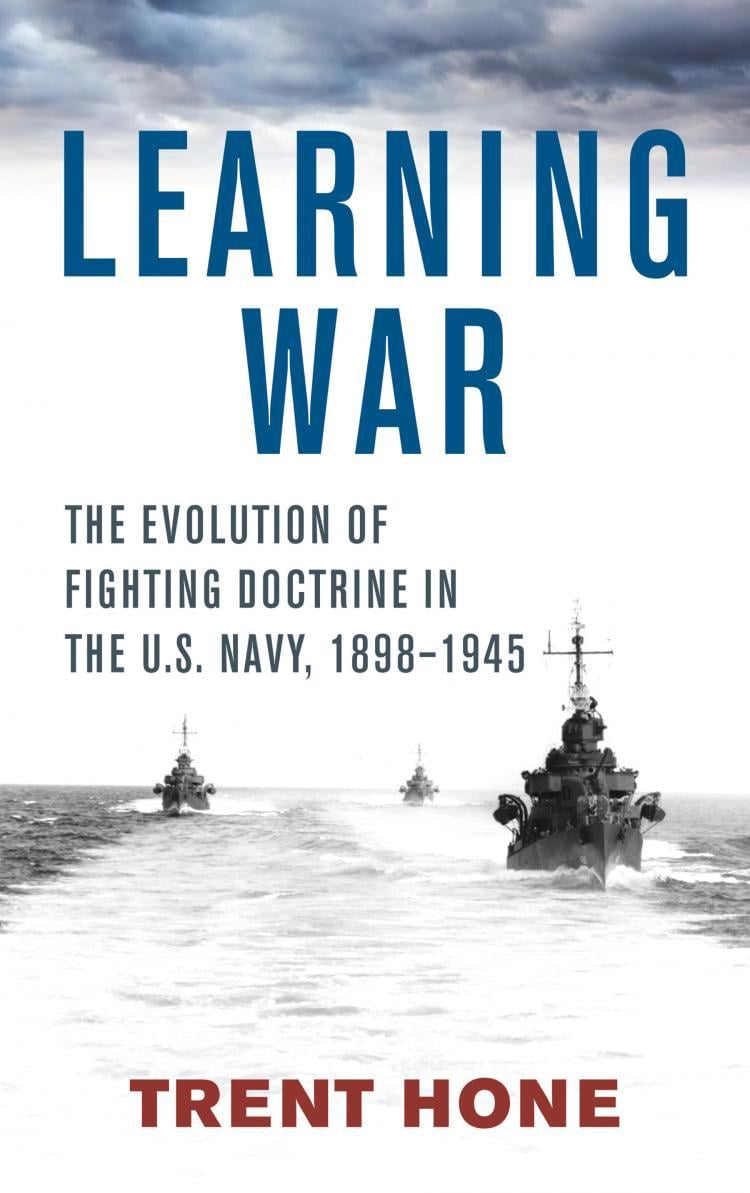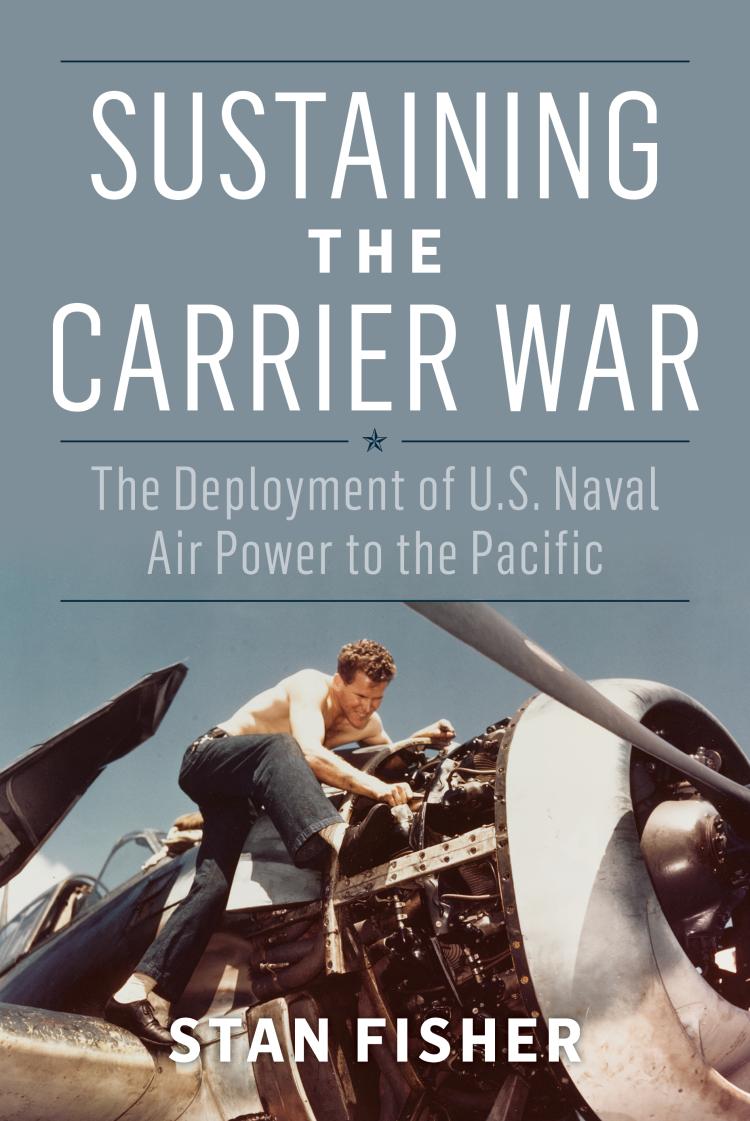Learning War
"The Evolution of Fighting Doctrine in the U.S. Navy, 1898-1945"
- Subject: USMC Commandant's Reading List | Drachinifel YouTube Channel - Reading List | 2024 Paperback Sale
- Format:
Softcover
- Pages:
432pages
- Illustrations:
16 b/w photos, 1b/w illustration, 2 maps<br><br>
- Published:
February 15, 2022
- ISBN-10:
168247836X
- ISBN-13:
9781682478363
- Product Dimensions:
9 × 6 × 1 in
- Product Weight:
18 oz
Overview
Learning War examines the U.S. Navy’s doctrinal development from 1898–1945 and explains why the Navy in that era was so successful as an organization at fostering innovation. A revolutionary study of one of history’s greatest success stories, this book draws profoundly important conclusions that give new insight, not only into how the Navy succeeded in becoming the best naval force in the world, but also into how modern organizations can exploit today’s rapid technological and social changes in their pursuit of success.
Trent Hone argues that the Navy created a sophisticated learning system in the early years of the twentieth century that led to repeated innovations in the development of surface warfare tactics and doctrine. The conditions that allowed these innovations to emerge are analyzed through a consideration of the Navy as a complex adaptive system. Learning War is the first major work to apply this complex learning approach to military history. This approach permits a richer understanding of the mechanisms that enable human organizations to evolve, innovate, and learn, and it offers new insights into the history of the United States Navy.
Trent Hone argues that the Navy created a sophisticated learning system in the early years of the twentieth century that led to repeated innovations in the development of surface warfare tactics and doctrine. The conditions that allowed these innovations to emerge are analyzed through a consideration of the Navy as a complex adaptive system. Learning War is the first major work to apply this complex learning approach to military history. This approach permits a richer understanding of the mechanisms that enable human organizations to evolve, innovate, and learn, and it offers new insights into the history of the United States Navy.
About the Author
Editorial Reviews
“This book should be read by both the Canadian Navy’s operational and engineering staff when they serve in such roles as maritime requirements or doctrinal development. As a small navy, the RCN has the ability to be more innovative. We have done it in the past and we can continue to do it. This book is a good primer on how this can be done.” —Starshell
“This book can be read both as naval history and as a case study of how organizations reinvent themselves and then put in place the structure that allows them to continue evolving so they can stay at the top of their field…. I highly recommend Learning War to anyone interested in the United States Navy as an institution and as a war-fighting instrument.” —The Journal of America's Military Past
"Learning War explains the US Navy's development of doctrine from 1898 to 1945, and reveals how the Navy embraced innovation, eschewing the dreadnoughts and big guns that had lulled senior naval professionals and an isolationist nation into complacency. Hone describes how the Navy created a sophisticated learning system that revolutionized warfare tactics and doctrine. The emergence of new ship types–destroyers, aircraft carries, and submarines–along with dynamic technological changes–radar, radio, and analog fire-control computers–and new officer education and organizational structure permitted the navy to learn, innovate, and evolve, which enabled incredible and rapid structural change after the disaster of December 7, 1941. Through repeated and regular cycles of learning, the Navy embraced rapid evolution, and after Pearl Harbor, it quickly changed from a centralized battleship fleet to a collection of mutually supporting carrier task forces. In doing so, by the end of World War II the US Navy had grown from a second-tier force to the most advanced and strongest naval force in the world. Yet, Hone contends, that change embodied more than size; it occurred because of the Navy's ability to learn and innovate.” —CHOICE
"Learning War provides a well-presented corrective to the many popular histories that portray the 1941 U.S. Navy as a conservative institution resistant to change." — The Journal of Military History
"This is an important study that dramatically advances our understanding of innovation and the importance of non-technological factors, particularly the development of learning systems, in successful innovation. It will be of use to scholars of both innovation and the U.S. Navy, as well as those with a general interest in those subjects. It offers a valuable case study in successful, long-term innovation in a complex, bureaucratic setting." —The Strategy Bridge
"Learning War is not only an assessment of the time of Evolution of Fighting Doctrine in the U.S, Navy between 1898 - 1945, but also a good source for Relearning the ways of fighting naval wars in the 21th century." —Deutsches Maritimes Kompetenz Netz
"Hone tells the story of the 1942-43 Guadalcanal campaign particularly well.... The most intriguing chapter is Hone's study of a critical but largely unrecognized reorganization that transformed Navy operations beginning in late 1942." — The New York Times
"A good read ... [and] a technical journey into complexity science!" —The NAVY Magazine
"The book flows smoothly." —Manhattan Book Review
"I loved this book! Hone brings a unique perspective to the study of the U.S. Navy's triumph in WWII, exploring how sound decisions taken decades beforehand allowed the Navy to ferociously adapt itself to the crucible of mortal combat. This is a thorough, illuminating, yet engagingly written work–an impressive addition to the scholarship on the Pacific War." —Jonathan Parshall, co-author, Shattered Sword: The Untold Story of the Battle of Midway
"Learning War: The Evolution of Fighting Doctrine in the U.S. Navy, 1898-1945, Trent Hone's primary focus is surface warfare, the way the navy's battleships, cruisers and destroyers fought the Pacific War. Yet he also offers a sophisticated, multi-level analysis of just how the modern navy functioned as an institution and how its leaders learned to think, innovate and command. Highly recommended." —John B. Lundstrom, author Black Shoe Carrier Admiral
"This superb work is a breakthrough in our understanding of how the U.S. Navy developed professionally and managed high velocity technological change in the decades prior to its supreme test in World War II. It reflects deep research distilled into a fast paced narrative that explains how so much of the Navy's overall outstanding performance in the war flowed from an institutional culture prepared to adapt and best apply new technology. This work has importance not just to historical understanding of the U.S. Navy in World War II, but also much more broadly to institutional cultures across the board." —Richard B. Frank, an internationally recognized Asia-Pacific War historian, is the author of Downfall: The End of the Imperial Japanese Empire
"Trent Hone's latest book fills a key gap in the literature about the modern U.S Navy. Building on his previous scholarship in articles and the book he co-authored with his father Tom, Hone provides the thread of the evolution of the U.S. Navy's doctrine for combat from the late 1800s to the end of World War II. The Navy revealed here was at the forefront of military institutions as a progressive, flexible, learning organization that enabled the Navy's unrivaled successes during World War II in the crucible of war." —John T. Kuehn, professor of military history, U.S. Army Command and General Staff College, author of America's First General Staff: A Short History of the Rise and Fall of the Navy, 1900-1950
"Learning War is a complex book full of detailed technical naval information, military jargon, and acronyms. Yet, it offers a unique and important window on naval history…. An excellent choice particularly for former naval officers, and a conduit for insight into the complexity of naval warfare for officers of sister services."—The Northern Mariner
"The work is a welcome addition to the research on U.S. Navy history and is highly recommended." —Militärgeschichtlichen Zeitschrift
"Learning War is an immensely detailed and thoroughly researched narrative. The author lays before the reader a compelling case as to how the US Navy adapted to meet the challenges of warfare at sea in this period. He does so … not by resorting to the predictable argument of the vast resources and industrial might available to their Lordships of the Admiralty’s transatlantic brethren, but rather by emphasising and demonstrating, through clear evidence, the culture of learning and experimentation that existed throughout the USN and the way in which doctrine was harnessed to transform this fighting force." —Australian Naval Institute
"This is an excellent, thought-provoking book which is essential to understanding how the US Navy approached, and eventually prevailed in the War in the Pacific."—Warship
"Learning War is a valuable addition to the naval literature of World War II, especially as it provides additional scholarship in the area of surface warfare. Trent Hone deftly blends a traditional historical narrative with a study of doctrinal development as seen through the lens of modern complexity theory. This work will be of interest to naval historians, naval professionals, and anyone with an interest in organizational development and innovation. —Cercles
2020 Marine Commandant’s Reading List
"Trent Hone has produced an important work for militaries interested in really becoming educated…. The book reveals the amount of risk, political/military collaboration, professional competence, vision/understanding and personal leadership that is required for a true educational environment to be created." —War in History
“Learning War represents one of the most profound contributions to the discussion of high-velocity learning in a naval setting in print. Few historians have captured the past in a way that raises so many ideas and challenges for the present. As a result, no serious consideration of the U.S. Navy in World War II will be complete without reference to this volume. Quite simply, if you are a serving officer and propose to read even one work of naval history ... this book should be the one.” —Naval War College Review
Series
Studies in Naval History and Sea Power
More Info
Drachinifel: US Navy Tactics, with author Trent Hone
Part 1: 1895-1939
Part 2: 1939-1945








